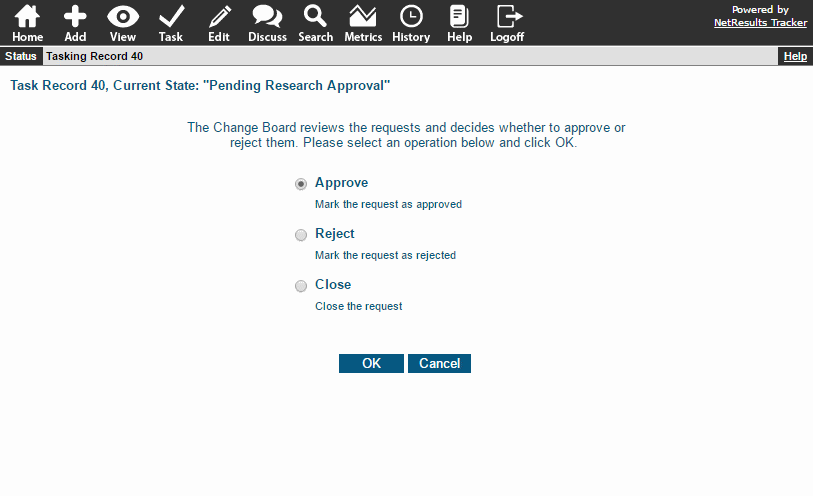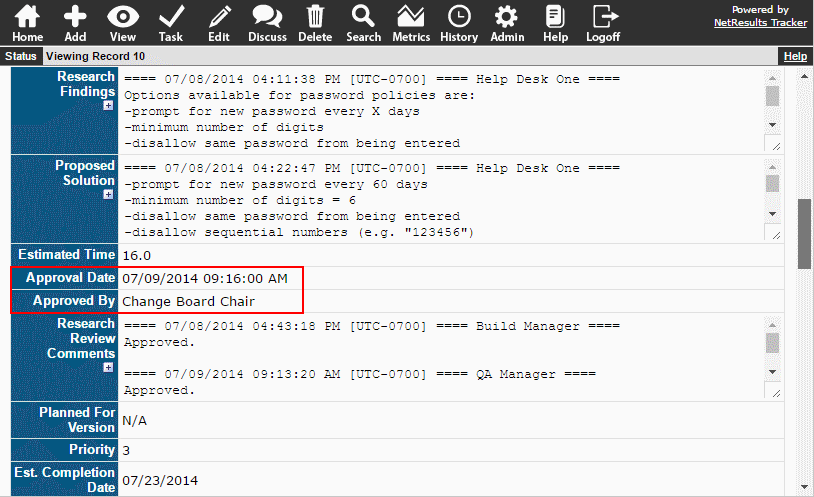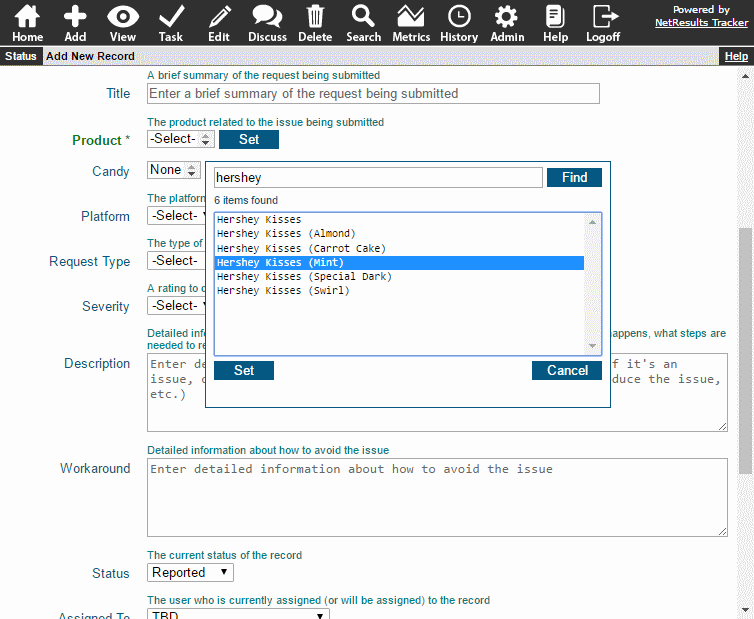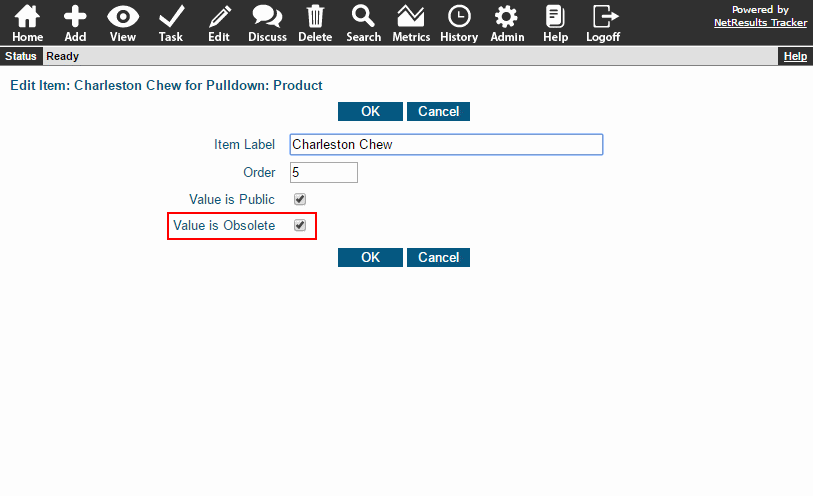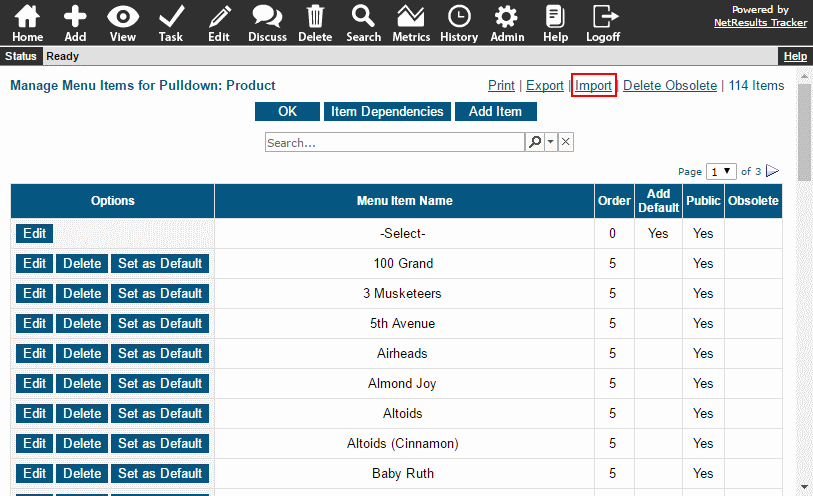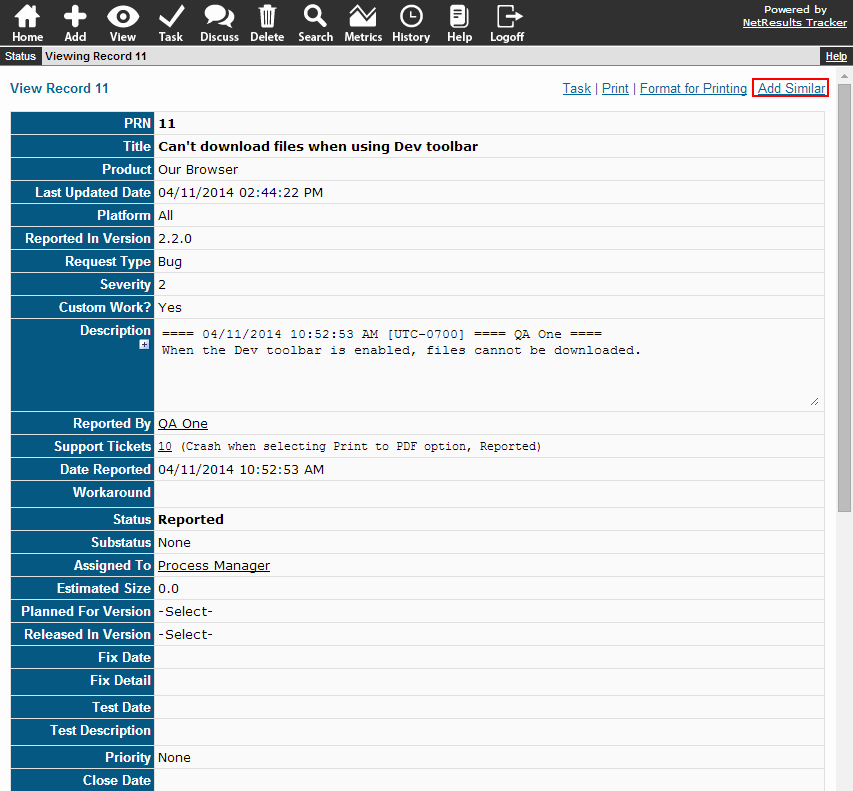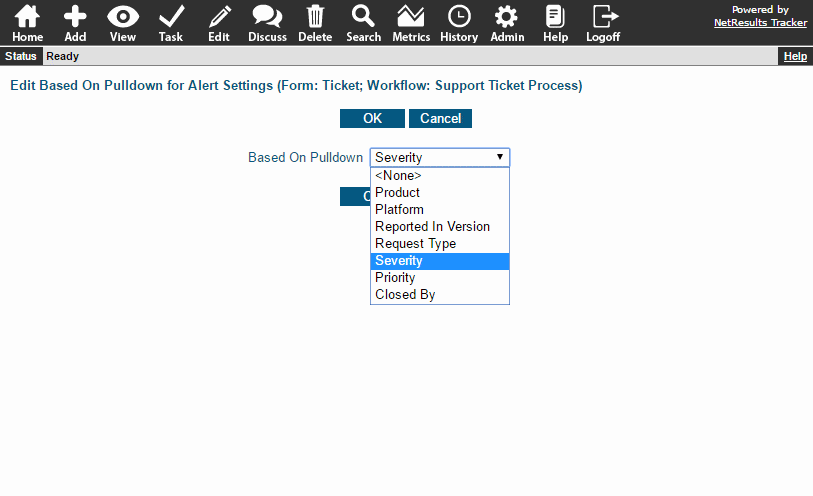Modify a set of records using a single operation.
There are times when you may need to update a large set of records and don't want to
update every single one individually. For example, Support Engineer One is on going on vacation and you
would like to assign all of his/her tickets to Support Engineer Two. These kinds of changes can be
done using the Edit Query Results operation.
Because this operation can make BIG changes to your data, it is strongly recommended that you
make a backup of your database before making this change as it cannot be undone.
Run a query that returns the set of records you'd like to change. Let's search for records assigned to Support Engineer
One.
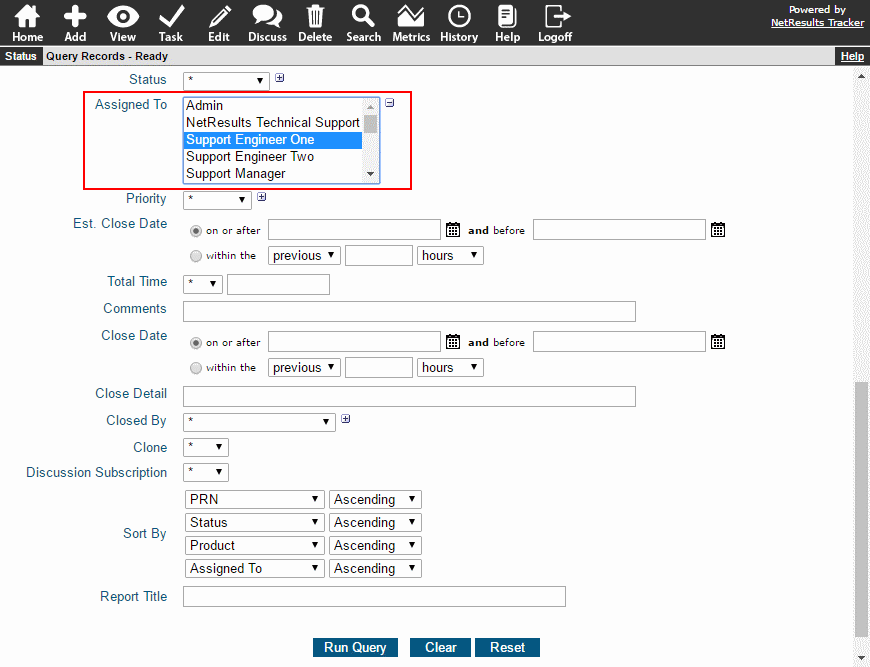
When the results are displayed, click on the Edit Records link.
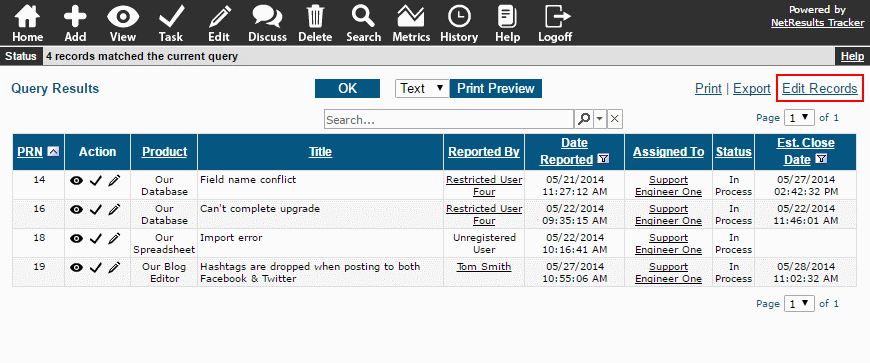
Heed the warning about making a backup.
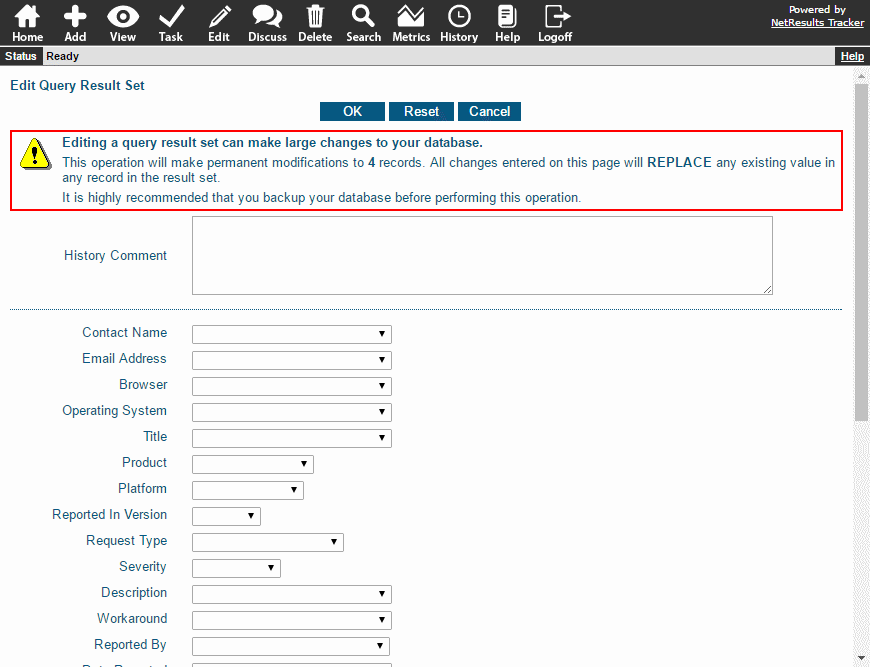
Make any desired changes. In this example, we are selecting a replacement for the user going on vacation.
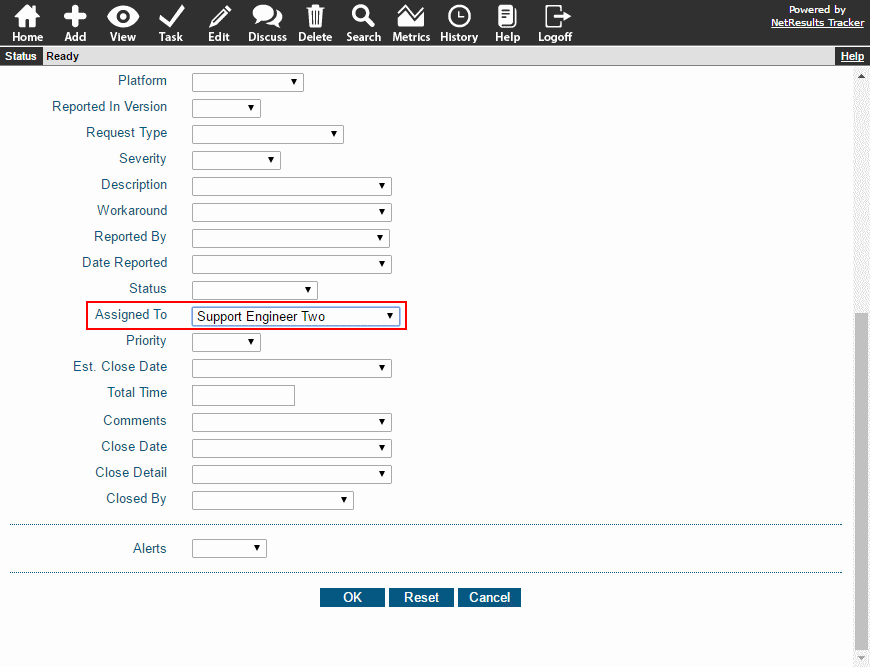
Check out the video below or this Knowledge Base article for detailed steps to Edit a Set of Query Results.
